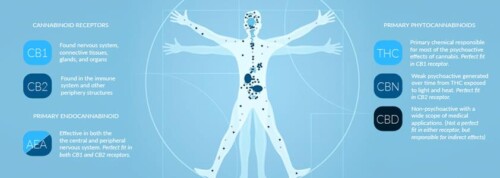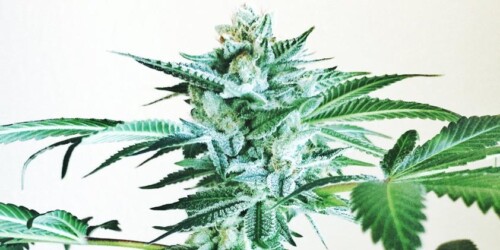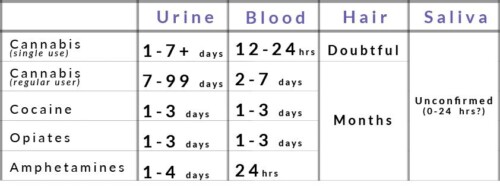
There are many reasons you would want to cleanse your body of all THC and related byproducts. For most people, it’s either to pass a drug test or to reap the benefits of a tolerance break.
However, beating a drug test is a drastically different objective than ridding your system of cannabis. Typically, the need to beat a drug test arises on such short notice that it’s impossible to clear the body of THC and its metabolites – so the objective becomes to simply hide, or mask, any evidence of its existence. What does this mean? Abstinence is the only surefire way to rid your body of THC.
Table of contents
How THC is Stored In the Body
Before we can proceed, you must understand how THC and other cannabinoids are stored in your tissues. Following the consumption of cannabis, THC levels in the blood rise, and the cannabinoids (mostly THC, but also secondary players like CBD, CBN, and CBG) are metabolized to a variety of inactive chemicals, the primary being tetrahydrocannabinol carboxylic acid (THC-COOH). THC-COOH is what’s referred to as a metabolite, or natural byproduct, of THC.
The THC itself is what gets you ‘high’, while its metabolites are simply what’s left behind after your body has processed it. Regular use causes an accumulation of both THC (psychoactive) and its metabolites (non-psychoactive) in your body’s fatty tissue. THC is stored in fat because it is a lipophilic molecule — it is soluble in fats rather than in water.
How much THC is in my body?

This is a difficult question to answer as everyone is different; however, we are all subject to the same factors that determine how much THC and its metabolites are in our system:
Frequency of usage
This is arguably the most important factor, as regular use (more than once a week) will cause both THC and its metabolites to build up in your fatty tissue. On the other hand, the occasional smoker will have very little buildup in their body.
Metabolism
Each person has a different rate of metabolism that varies based on genetics, height, weight, sex, and level of physical activity. This rate of metabolism determines how quickly the THC is broken down, converted to metabolites, and eventually released from your system.
Body Fat
THC and its metabolites are stored in fat cells. Meaning that the higher concentration of body fat you have, the larger your storage capacity for THC and its byproducts.
Exercise
The THC and metabolites stored in the fat cells slowly diffuse back into the blood over time. Studies suggest that exercise can elevate blood THC levels by releasing dormant THC from fat stores. This means that exercise has the potential to increase the rate at which your body releases stored THC and metabolites.
Strain
Consuming potent, high-THC strains will result in higher levels of THC and metabolites in the system. Alternatively, consuming low-grade ‘street weed’ or CBD-rich strains will result in significantly lower levels of THC.
How long does a THC detox take?

The answer to this question largely depends on how much is stored in your tissues. In addition to the personal factors listed above, the type of test used to check for THC in your system is a very important distinction. These are the most common forms of testing for cannabis use:

Urine test
Also known as a urinalysis, this type of testing is most common as it is cheap, non-invasive, and relatively accurate. Despite their popularity, urine tests do not actually detect THC in the body, but rather they search for the metabolite THC-COOH. This means that urine tests do not detect the psychoactive cannabinoid THC, and therefore in no way measure impairment. This metabolite has an unusually long half-life and can be detected in urine for months after use. A one-time user can test positive via urinalysis from 1 to 7+ days after use; however, most will be below the ‘positive’ threshold within a few days. Alternatively, a regular user (more than once a week) can test positive for the THC metabolite over 90 days after the last time they consumed.
Blood test
Unlike urinalysis, blood tests detect the active presence of THC in the bloodstream. After smoking cannabis, for instance, THC levels peak rapidly then begin to decline within an hour. Therefore, high THC levels in the blood are a good indication that you have smoked recently. It is worth noting, however, that low levels of THC can remain measurable in the blood for 8 hours or more without any measurable signs of impairment in one-time users. In the case of chronic users, the THC in the bloodstream can remain detectable for several days.
Hair follicle test
Hair follicle tests are expensive and typically reserved for highly sensitive jobs and those requiring special clearance. Hair follicle tests are arguably the most objectionable form of drug testing as they don’t measure current use but rather non-psychoactive residues that remain in the hair months after use. These residues are absorbed internally and cannot be washed out by shampoos. This type of testing is likely not sensitive to one-time cannabis users.
Saliva test
Saliva testing requires the use of a newer, less proven technology. Due to reliability problems, saliva tests for marijuana have yet to gain mainstream acceptance in the U.S., though they are sometimes used for their affordability, especially for high-turnover positions.
Thus, the question of how long cannabis stays in your system boils down to whether you are being tested for the presence of THC itself or its metabolites. The psychoactive THC compound is only present for 12 to 24 hours in one-time users and 7-14 days in chronic users. On the other hand, THC metabolites are detectable for months after use for frequent users.
If You Can't Get Legitimately Clean in Time—You Can Still Beat The Drug Test
Your ability to beat a drug test will depend on your personal usage history, how long you’ve abstained, and which type of test is being administered. If you’re like 95% of people, you were just notified of your random urine test and you’re freaking out that you won’t pass it. It’s not a great situation, but there are things you can do to pass your test.
Remember, if you’re looking for a quick fix, it’s too late to get clean – your only option is to attempt to ‘beat’ the test. Generally speaking, you have three options for a quick fix; dilution, adulteration, and substitution.
How to Get Weed Out of Your System
Dilution
No anecdotal ‘system flushing’ technique has been supported scientifically. Does flushing out your system work? Sometimes, but it’s dependent on all the personal factors we discussed above. There are some strategies you can use to help better your chances of passing this way.
The number one reason dilution doesn’t work? The testing facilities are aware of the flushing strategy and are trained to flag samples that have been diluted beyond normal levels. This means that to pass a drug test you must ensure the urine sample is diluted such that it tests below the ‘positive’ threshold for THC metabolites while not alerting the facility that you diluted the sample. Here are some ways to help you do that:
Abstain immediately: If you haven’t already, stop consuming cannabis as soon as you are notified of your drug test. This may sound obvious, but continuing to consume is not going to help you pass the test.
Time: To reiterate, the longer you abstain prior to testing, the higher the likelihood you have of passing. The aggregate level of THC metabolites in your system will continue to decrease over time.
Exercise: The key with exercise is that it only helps if you sufficient time before your drug test, as it increases the rate at which your body releases stored THC and metabolites – not a good option right before you pee into a cup. Avoid exercise in the days immediately preceding your test. If you have a few weeks before the test, exercise will help.
Diet: The key here is to keep your body healthy and appearing ‘normal’ despite your attempt to dilute the THC metabolites in your system for the test. This means eating healthy and drinking an above average amount of water in the days or weeks preceding the test. Anecdotal evidence suggests supplementing with use of natural diuretics (coffee, cranberry juice, etc.). About 24 hours before the exam you can take a vitamin B complex supplement which will help bring the yellow color back to your urine (making it appear less diluted). It is also suggested that you supplement with creatine, as the absence of creatine metabolites is another way testing facilities monitor against dilution.
Pee: Don’t let the test be your first pee of the day! Try to urinate several times prior to the actual test. When you step into the restroom, catch your sample mid-stream as it will have the lowest concentration of metabolites.
Red Flags for Testing Facility:
The upside to a flagged sample is that it buys you more time before you’re required to retake the drug test. However, some companies know that a heavily diluted and flagged sample indicates that the employee was likely attempting to beat the test. Your sample will be flagged if any of the following properties are out of the appropriate range:
– Temperature, specific gravity, pH, creatinine concentrations or appearance (color)
Adulteration
If you don’t have adequate time to implement the dilution strategy described above, there are substances that you can add to your urine to yield a false negative test result. The two primary urinary adulterants that have been scientifically proven to interfere with drug test results are zinc and papain.
Zinc: Zinc is available as in powder form (zinc sulfate) or as an oral supplement available at any health store. An August 2011 study published in the Journal of Analytical Toxicology concluded that the use of zinc, both as a urinary adulterant and an oral supplement, is effective at subverting routine drug testing. The addition of zinc to a urinary sample was shown to cause reproducible false-negative results on a drug test. It is important to note the zinc likely interferes with the testing mechanism, rather than interacting with the drugs themselves.
The study goes on to state, ‘consumption of zinc supplements taken orally after light marijuana use can interfere with the detection of THC in urine samples for a 12-18 hour period.’ The study also concluded that the use of zinc as an oral supplement was undetectable by standard means. The study dose is 200mg of zinc orally (it’s important to note the test subject was a one-time smoker). For the full text, click here.
Papain: Papain is a biologically active substance derived from the papaya plant and can be found in granule or powder form. An August 2005 study published in the Journal of Analytical Toxicology concluded that ‘papain exerted a dose-dependent significant effect [decrease] on the concentration THC-COOH in a dose-dependent manner…’ that led to false-negative test results (when added to a urine sample). For the full text, click here.
Substitution
If you’re running out of time, there are last resort options that don’t involve the use of detox drink. Fully synthetic urine options are available, as well as bags that allow you to collect and dispense another person’s clean urine. While this may sound extreme, so is the alternative – potentially losing your job over the consumption of a harmless plant.
We highly recommend the Powdered Urine Kit from TestClear as it utilizes real human urine as opposed to synthetic ingredients that have a higher chance of raising red flags in the testing process. Another reason we love this Powdered Urine Kit is that it includes two air-activated heaters and a temperature strip to ensure the urine sample temperature tests within the acceptable range.
Detox Products

There are literally hundreds of detox products available. While they are all slightly different, nearly all of them will use one or more of the strategies discussed above. Look at the ingredient list and understand what you’re potentially consuming. Do they work? Yes (with the one caveat that you must purchase from a reputable company). The implications of a failed drug test can be devastating, and that’s why the only detox products we recommend are those sold by TestClear.
The correct detox product for you will depend on the type of drug test your taking and how much time you have before the test. For hair follicle tests, we suggest you start with the Old Style Aloe Toxin Rid Shampoo during the days leading up to the test and then apply the Zydot Ultra Clean Shampoo on the day of the drug test.
For urine tests with very short notice (i.e. 24 hours), we recommend the Mega Clean Cleansing Drink. If you have more than 24 hours before your drug test, we advise you to use the Toxin Rid product line from TestClear, which is available in 2, 3, 4, 5, and 10-day detox programs. You can also use the Toxin Rid detox program to pass a blood drug test. All of the Toxin Rid products come with a Money Back Guarantee, meaning they really stand behind their products. The other reason we like ordering from TestClear is that products can be shipped overnight—perfect for passing that last minute drug test.
You can use coupon code: ‘TestClear10‘ to get 10% off of all TestClear detox products sitewide!
Test at Home
Running out of time and can’t calm your nerves? Grab an at-home marijuana drug test kit. For less than $10 you can have peace of mind before taking the real exam. It’s a great way to see if the dilution strategy or detox program worked.
The True Cleanse

As we stated at the beginning of the article, abstinence is the only way to truly cleanse your body of all active THC and associated byproducts. Depending on your specific usage habits, it will take between 7 and 14 days for the active THC molecule to exit the body for those that consume regularly. Two weeks without cannabis?! Many people take periodic tolerance breaks (also known as T-breaks). Believe it or not, it’s possible to hit the reset button on your cannabis tolerance – when you resume, it will be like smoking for the very first time…again. When you resume use, remember to start slow i.e. smaller dosages than before the break.
We would like to reiterate that while two weeks is a sufficient time for most to rid their system of active THC and reset their tolerance, it does not mean you will pass a drug test! Regular cannabis users will have non-psychoactive THC metabolites in their system for up to 90 days. Abstinence is also the only way to rid your body of all THC metabolites – so if you don’t want any evidence of THC in your system, you will likely need to abstain for a significantly longer period than two weeks. Remember, drinking fluids doesn’t increase the shedding of metabolites; it simply dilutes the test sample.
What About CBD?
This article addresses the presence of THC in the body, but what about CBD? In case you are unfamiliar, CBD is the second most prevalent compound in cannabis – it’s non-psychoactive and provides a wide range of therapeutic applications. The interesting thing about drug tests is that they were only designed to test for the presence of THC in the system – if you recall, the drug tests look for a byproduct of THC, not CBD. That means that patients using CBD products derived from hemp, which contains less than 0.3% THC, should not test positive on a drug test (there is a single, unconfirmed study that found that CBD could be converted to THC by the digestive tract, but these findings have not been replicated and further studies have contradicted the proposed phenomenon of CBD to THC conversion).
That said, there’s a bit of a caveat we need to address: some full-spectrum products could, theoretically, be concentrated such that the amount of THC exceeds that 0.3% figure. To illustrate how this could happen, we did some basic math to replicate the concentration of a 500 mg bottle of CBD tincture.
Assuming the sample of industrial hemp flower used to make the tincture weighed 2.78 g (or 2778 mg), and assuming it was composed of 18% CBD and 0.3% THC (pretty standard percentages for hemp), the concentration of hemp extract needed to yield 500 mg of CBD would contain about 8.33 mg of THC. This is about 1.6% THC, much higher than the theoretical 0.3% of the starting material.
In this example, a 25 mg dose of our theoretical CBD oil would contain about 0.42 mg of THC. This may not be enough by itself to trigger a false positive, but if you’re using your oral dose of CBD in conjunction with other forms, such as vaping or dabbing, those trace amounts of THC may add up to become detectable in your system, causing you to risk failing a drug test. For this reason, if you’re worried about passing a drug test, it’s best to look for options that are batch-tested by an independent laboratory and either display their (compliant) THC content clearly in the analysis or are shown to contain no THC whatsoever.
Table of Contents

